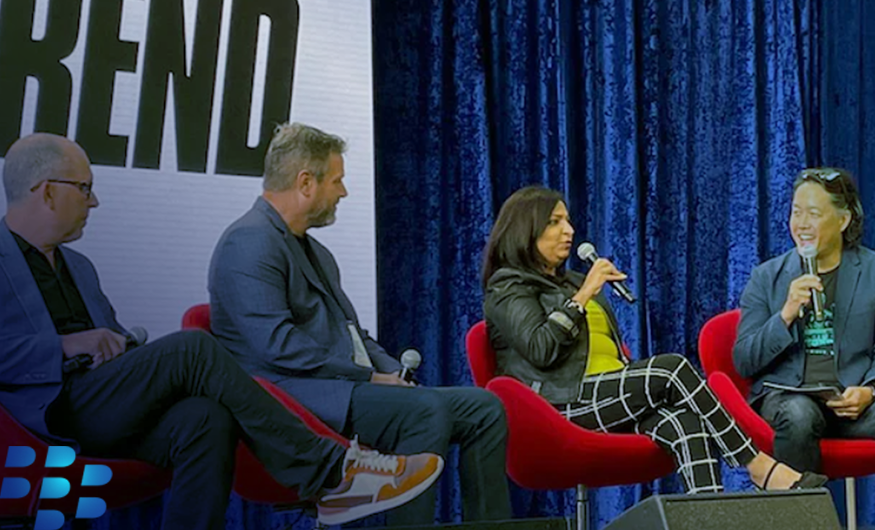SDVs Get Smart: The Fight for the Future of Vehicles Is Software-Defined

Choosing a new car used to be all about how it looked and how it drove. But times are changing. And key leaders in the automotive industry argue that the software in their vehicles will be central to attracting buyers in the future. They shared their views during a panel discussion at the recent North American International Auto Show (NAIAS) in Detroit.
Automotive Industry Transformation
Just as we now buy phones, TVs and other devices based on features and available services, consumers are increasingly choosing vehicles for the digital experiences they offer. As cars electrify, they are also creating new challenges for which their digital capabilities can provide a solution. It’s becoming clear to top automotive executives that a highly capable software platform is essential for future success in their competitive industry.
“The head of a very large German car company had to exit from his job reportedly because of delays in delivering and shipping software, which affected the shipping of a large number of electric vehicles,” says Ed Loh, head of editorial at MotorTrend, speaking in the panel he chaired at the 2022 Detroit Auto Show.
“It's an understatement to say ‘something's going on,’” adds Scott Miller, vice president of software-defined vehicle (SDV) and operating system at General Motors. “This is the most transformative time I've ever seen in the auto industry. The transformation of the whole portfolio to EVs and the software-defined vehicle is just accelerating. To bring all that together is a massive effort — to build a team to create the technology infrastructure, to get the software expertise, the tools, and the processes.” As part of its progress in this direction, GM has launched the new Cadillac Lyriq and Hummer EV with software capabilities at their core, and this will also be true of the more mainstream Chevy Equinox, which will be going electric in 2024, alongside electrified versions of the Silverado and Blazer.
This isn’t a typical area of expertise for most traditional automakers, however, which is perhaps why the previously mentioned CEO encountered problems rolling out software for his company’s vehicles. Fortunately, there are experts ready to help with the heavy lifting by creating the middleware onto which manufacturers can build their unique capabilities. “We're seeing the commitment to the next-generation software architecture within the vehicle ramp up incredibly this year,” says John Wall, senior vice president and head of BlackBerry Technology Solutions (BTS) operations at BlackBerry Limited. The unit is responsible for BlackBerry® QNX®, an automotive software platform currently running in more than 215 million vehicles, and BlackBerry IVY™, a platform developed jointly with Amazon Web Services (AWS) to accelerate delivery of advanced software-defined features and capabilities in automobiles. “I like to think of our company as the safe foundation for the car that allows the GMs and Stellantises of this world to be able to imagine what's possible, and execute on that in a safe and secure way.”
Automotive Safety and Security in SDVs
Safety and security are key elements that must be maintained as vehicle functions shift over to being primarily software-defined. There can be no sacrifice in reliability as additional features are provided, says GM’s Miller. “The approach we're taking is to enable the same robustness in the core functionality,” he says. “But then we're abstracting the ability to combine those different features and different signals in different ways, not only within the vehicle, but with the cloud and connectivity, as well. We're building a platform on top of our electrical architecture that gives us a way to get new features out robustly and quickly.”
Once the platform has been delivered in a secure way, it can become a selling point for new vehicles, attracting new customers and delighting existing ones. “We're going to learn from that as we go along, then take advantage of it in more substantial ways in the electrical architecture in future iterations,” says Miller.
The GM platform, called Ultifi, “is working in our vehicles right now and will be launching very soon. After that, just about every vehicle we build from here out will have equipment that will have Ultifi in it.
“I can envision a day when our customers are asking ‘What version of Ultifi do you have? Do you have the updated version yet?’ That's an important difference. Cars will keep getting better over time. When you leave the dealership, that's just the start of the relationship. The Ultifi name will be used as a way to talk about where you're at in that journey.”
Combined Software and Automotive Services
A strong software base also enables partnership with best-in-class providers of additional services, such as Stellantis’s work with Amazon, according to Mamatha Chamarthi, head of software business and product management at Stellantis, who also participated in the Detroit panel discussion.
“We are working side-by-side with Amazon to deliver the smart cockpit alongside the three technology platforms that we have announced — STLA Brain with STLA SmartCockpit, and STLA AutoDrive — and bringing all those technology products into the Jeep Recon,” says Chamarthi.
This kind of development requires secure, dependable interconnectivity between the core car components, and out to the cloud says Wall from BlackBerry.
“We look at ourselves as a plumbing company,” Wall says. “We're a hypervisor operating system in the cloud. We're here to facilitate what the OEMs and the Tier Ones and the Tier Two partners need to execute the software-defined vehicle. We maximize what they can execute and what they bring to the market.
“We are completely focused on delivering that foundational technology, such as putting QNX in the cloud, to provide parity of capabilities with what's happening in the car. The consumer is never going to know we’re there, but the manufacturers of the vehicles will know that they have a very safe, secure foundation to build upon.”
Highly advanced features, such as the ones needed to deliver autonomous driving, and various levels of advanced driver-assistance system (ADAS), are largely based on software, continues Wall. “These all exist today. But when we start talking about the software-defined vehicle, we're really starting to talk more about a centralized compute ecosystem as the next step.”
This architectural shift will signal the key phase in making the transition to cars where software features take a leading role in attracting customers, Wall says. “Software will continue to grow in the car, it's inevitable. It’s going to be very important.”
New Automotive Awards Category
“In the future, when cars will be electrified — full electric — we will solve for range, we will solve for recharge time, they're all going to be quick,” says MotorTrend’s Loh. “It is the software piece, that is almost exclusively the ‘everything’ you put in the car. The electromechanical stuff, we kind of know what that is. But the future is about unlocking the vehicles as a platform.”
And it takes a lot of smart people to develop and deliver the full potential of software-defined vehicles. Leaders in this space are the subject of a new documentary by MotorTrend studios called “Coding the Car,” and they will be celebrated by a new award program led by MotorTrend’s highly regarded and influential editorial staff. The MotorTrend Group, now a division of Warner Discovery Media, recently announced a partnership with BlackBerry to create the Software-Defined Vehicle Innovator (SDVI) awards.
The online release of the Coding the Car film is among several editorial activities taking place this fall, leading up to a gala
SDV Innovator Awards show scheduled during the 2023 Consumer Electronics Show in Las Vegas next January, Loh said.

